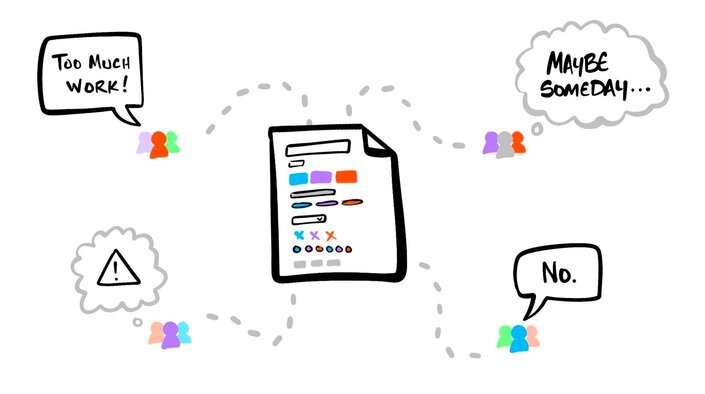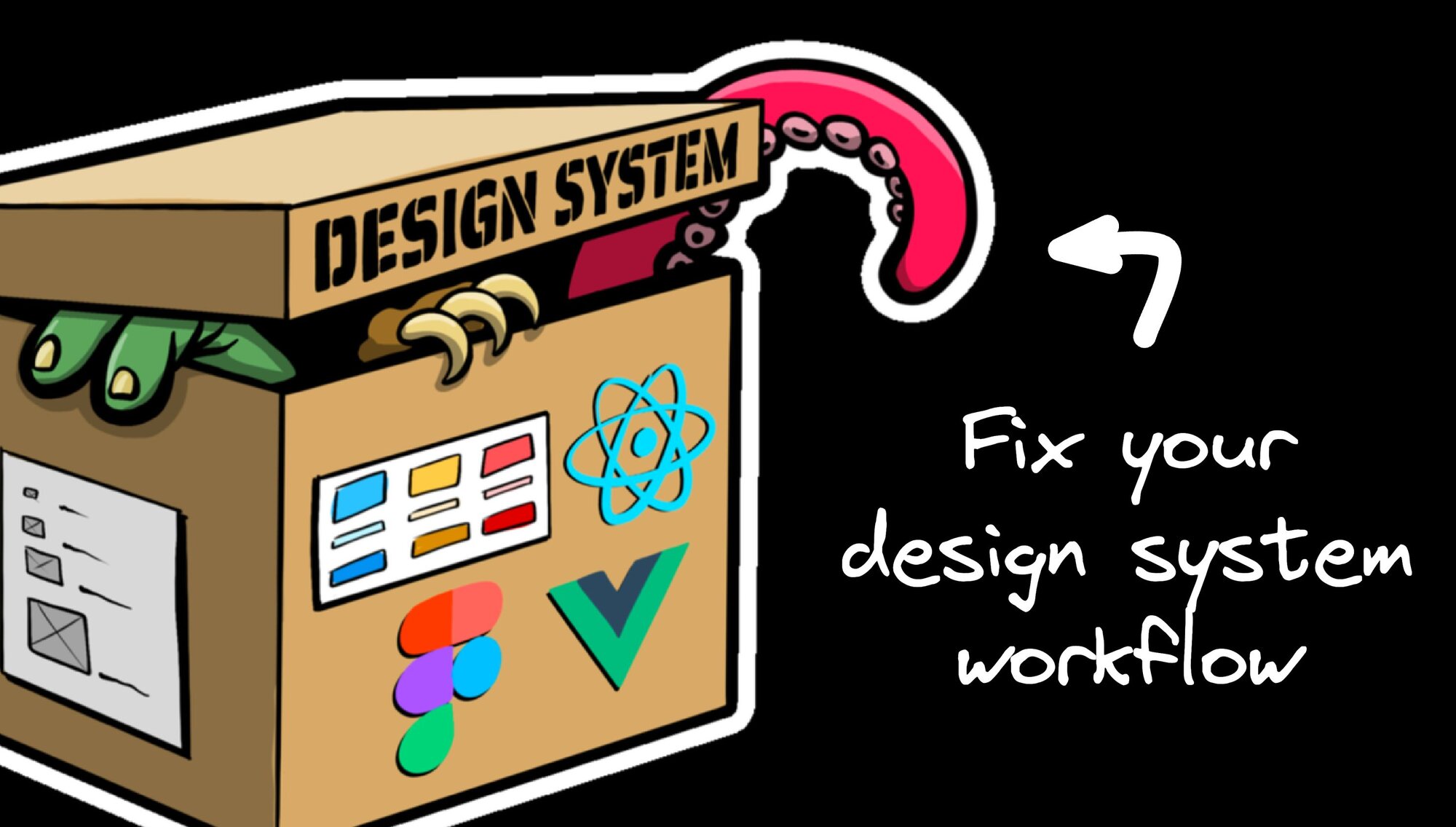Design systems have become a crucial part of modern design and development, especially for large enterprises. They promise consistency, efficiency, and scalability. But, implementing and maintaining an effective design system comes with challenges that many teams struggle to overcome.
As the CEO of Builder.io, I've had countless conversations with design system leaders at major companies like Amazon, Lenovo, IBM, and Ford. Through these discussions, we've uncovered some key pain points that plague design system teams — and more importantly, how to solve them.
One of the biggest hurdles design system teams face is getting widespread adoption across their organization. You can create the most beautiful, well-thought-out design system in the world, but it's worthless if developers aren't actually using it.
Why is adoption so difficult? A few reasons:
- Change is hard. Developers are comfortable with their existing workflows and tools.
- Learning a new system takes time and effort.
- Migrating existing code to use a new design system is tedious work that teams often deprioritize.
The key to solving the adoption problem is to make integration as frictionless as possible for developers. Instead of asking them to become experts in your design system, provide tools that are already well versed in your preferences.
One way to solve for this is with Figma’s Code Connect which bridges the gap between design and development by bringing real component code into Figma's Dev Mode. This allows developers to preview and share actual code snippets from their design system, being able to see clearly what Figma components tie to what components in code.
Unfortunately though, they cannot give you more than small snippets, and you’ll still need to hand code the design by copy and pasting lots of snippets and combining them together yourself.
A better solution to all of this manual work is to use a design to code tool with design system support. This approach most effectively eases the learning curve and makes migration easier, significantly boosting adoption rates. Builder’s Visual Copilot is one example of such a tool.

Large enterprises often have different teams working with different frontend frameworks — React, Angular, Vue, etc. But, design systems need to work consistently across all of them.
Some companies try to solve this by creating separate implementations of their design system for each framework. But this approach has major downsides:
- It's incredibly time-consuming and expensive to maintain multiple codebases.
- Inconsistencies inevitably creep in between different implementations.
- Adding support for new frameworks becomes a massive undertaking.
A better solution is to use tools that allow you to write components once and automatically compile them to multiple frameworks.
A common way this is tackled is through web components because they are standalone, reusable UI elements designed for cross-application use. However, they also face significant drawbacks, including lack of native server-side rendering, limited integration with popular frameworks like React, and potential performance overhead due to additional dependencies.
A better solution is to use an open-source tool like Mitosis that allows you to write components once and automatically compile them to multiple frameworks. This ensures perfect consistency and makes it trivial to support new frameworks as they emerge.
Learn how to get started with Mitosis to create a single source of truth for all reusable components within your design system.
Another common frustration is the disconnect between design tools like Figma and the actual code implementation of a design system.
Designers often create components in ways that don't translate cleanly to code. This leads to a lot of back-and-forth between designers and developers, with things inevitably getting lost in translation.
The root of this problem is that most design tools don't provide enough guardrails to ensure designs can be accurately coded. Designers need better guidance on how to create components in a developer-friendly way.
To bridge this gap, consider implementing solutions that provide a seamless pipeline from design to code while enforcing best practices that work for both designers and developers. Look for tools that offer features like:
- Component mapping: Create a direct link between design components in your Figma file and their corresponding code components.
- Design constraints: Implement guardrails in your design tools that guide designers towards creating developer-friendly components.
- Automated code generation: Use AI-powered tools to transform designs into clean, consistent code that adheres to your design system.
By implementing these solutions, you can significantly reduce the friction between design and development, leading to faster implementation and fewer inconsistencies.
For instance, see Builder.io’s component mapping feature in action:
Another challenge in maintaining design systems, especially at large enterprises, is keeping the code in sync with evolving designs. While updating designs in tools like Figma can be done quickly, translating those changes into code can take significantly longer. Design updates can take days, where updating code can take weeks, if not longer.
This disparity creates a versioning problem that can lead to inconsistencies between the design system as represented in design tools and its implementation in code. Some common issues that arise include:
- Design teams iterating on the design system faster than developers can implement changes
- Confusion among developers about which version of a component to use
- Uncertainty about whether to customize existing components or create new ones
- Unexpected visual discrepancies between designs and final implementations
One way to overcome this is to establish a robust system for translating design updates into code quickly and accurately. This approach will help your team maintain a single source of truth across both design and development, ultimately leading to a more consistent and efficient design system implementation.
One tool that also helps with this process and is unique in the market is Builder.io's Component Set Generation, which is a feature within Visual Copilot. This feature automates the creation of code components from Figma designs, helping to keep design system components in sync across both platforms.
Component Set Generation is nearing beta release. To get on the waitlist for early access, fill out the form here
Even when a design system is widely adopted, maintaining consistency across an entire organization is an ongoing battle. It's all too common to see a company's main website perfectly on-brand, while their logged-in app looks completely different.
This fragmentation happens for a few reasons:
- Different teams work in silos without proper coordination.
- The design system evolves, but not all products are updated to reflect changes.
- Developers make well-intentioned tweaks that slowly cause designs to drift.
The key to solving these challenges is having the right processes and tooling in place:
- Centralize your design system as a single source of truth. That way everyone is on the same page with any changes that are made as the system evolves.
- Use tools that can automatically propagate design system changes across your entire codebase. (like the ones mentioned in this blog post)
- Implement safeguards that prevent designers from unintentionally deviating from the system.
By combining these strategies, you can create a robust system that maintains consistency while still allowing for necessary flexibility and evolution.
While these challenges can seem daunting, the good news is that solutions exist. By leveraging the right combination of tools, processes, and best practices, it's possible to create a design system that is truly scalable, consistent, and widely adopted.
At Builder.io, our Visual Development Platform not only addresses these pain points but works to improve the entire workflow of going from idea to production. We understand how important design systems are to that flow and we’re committed to providing teams with everything they need to succeed — from initial creation to ongoing maintenance and evolution.
The future of design systems is a positive one. As tooling continues to improve, we'll see more and more organizations reaping the full benefits that a well-implemented design system can provide.
Builder.io visually edits code, uses your design system, and sends pull requests.
Builder.io visually edits code, uses your design system, and sends pull requests.




 Connect a repo
Connect a repo








